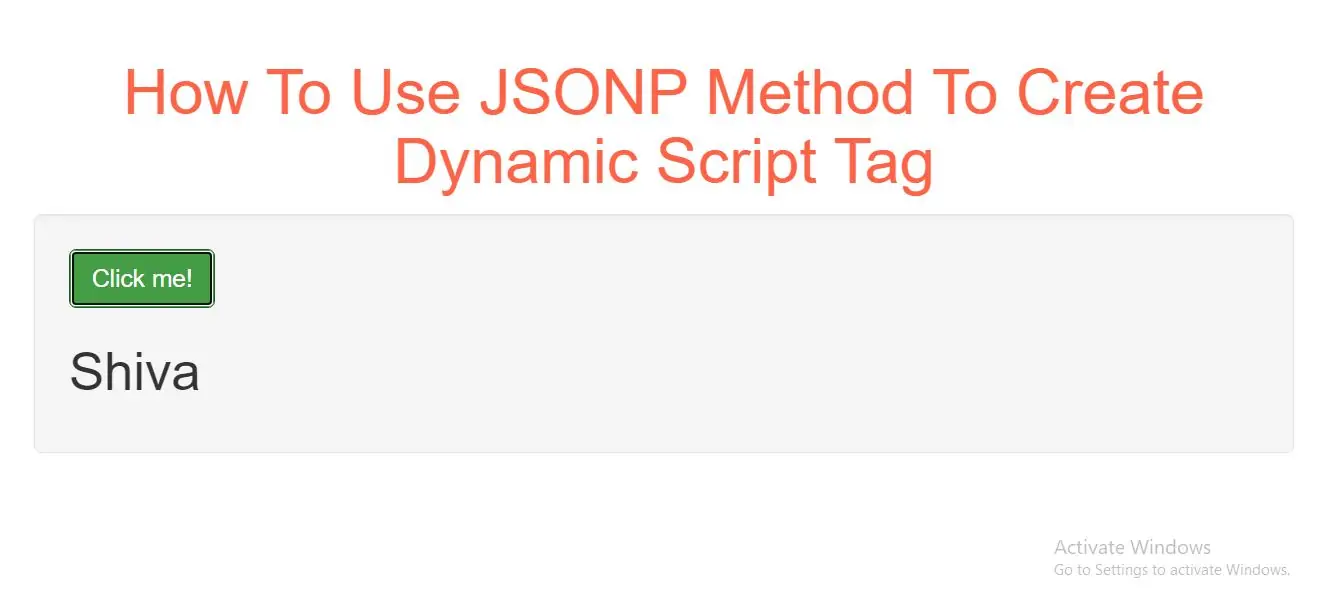
JSONP stands for JSON with Padding.
Requesting a file from another domain can cause problems, due to cross-domain policy.
Requesting an external script from another domain does not have this problem.
JSONP uses this advantage, and request files using the script tag instead of the XMLHttpRequest object.
Creating a Dynamic Script Tag
Execute the "myFunc" function when the page is loading, based on where you put the script tag, which is not very satisfying.
The script tag should only be created when needed:
Let's Learn
Step 1:
Create Index.php file and implement code as below
<button class="btn btn-success" onclick="clickButton()">Click me!</button> <h2 id="demo"></h2>
Step 2:
Create json_demo.php file and implement code as below.
<?php
$myJSON = '{ "name":"Shiva", "age":30, "city":"New York" }';
echo "myFunc(".$myJSON.");";
?>
Step 3:
Now we implement java script to get data from database from php file.
<script>
function clickButton() {
var s = document.createElement("script");
s.src = "json_demo.php";
document.body.appendChild(s);
}
function myFunc(myObj) {
document.getElementById("demo").innerHTML = myObj.name;
}
</script>
Complete Code For JSONP Method To Create Dynamic Script Tag
<!DOCTYPE html>
<html>
<head>
<title>How To Use JSONP Method To Create Dynamic Script Tag</title>
<meta charset="utf-8">
<meta name="viewport" content="width=device-width, initial-scale=1">
<link rel="stylesheet" href="https://maxcdn.bootstrapcdn.com/bootstrap/3.4.1/css/bootstrap.min.css">
</head>
<body>
<div class="container">
<br>
<div class="text-center">
<h1 id="color" style="color: tomato">How To Use JSONP Method To Create Dynamic Script Tag</h1>
</div>
<div class="well">
<button class="btn btn-success" onclick="clickButton()">Click me!</button>
<h2 id="demo"></h2>
</div>
<script>
function clickButton() {
var s = document.createElement("script");
s.src = "json_demo.php";
document.body.appendChild(s);
}
function myFunc(myObj) {
document.getElementById("demo").innerHTML = myObj.name;
}
</script>
</div>
</body>
</html>